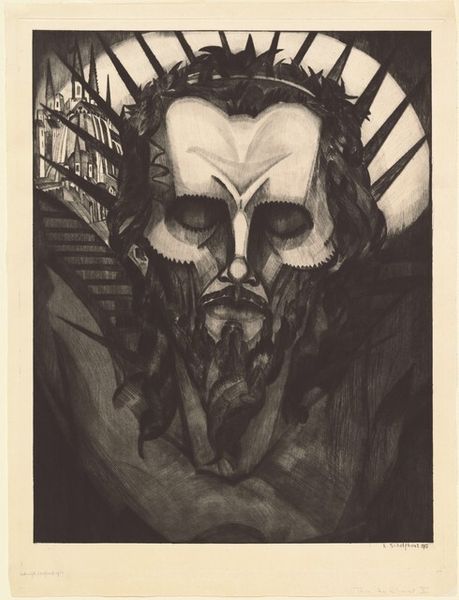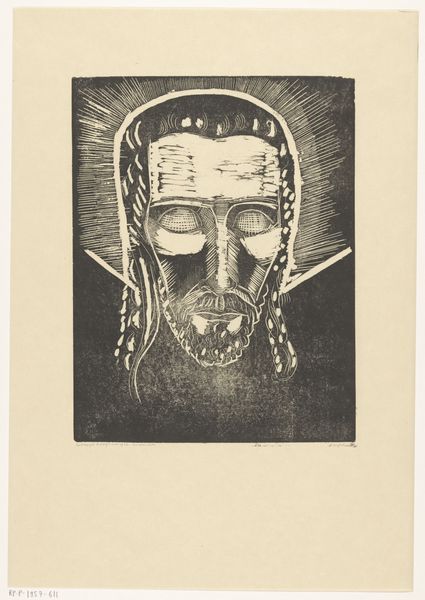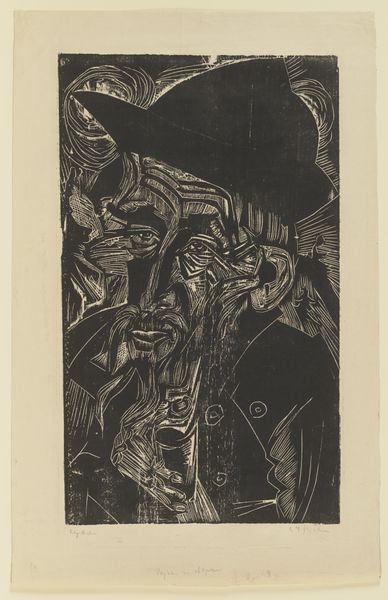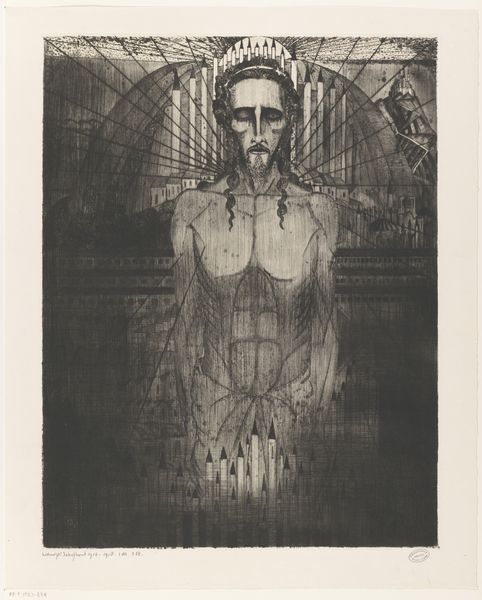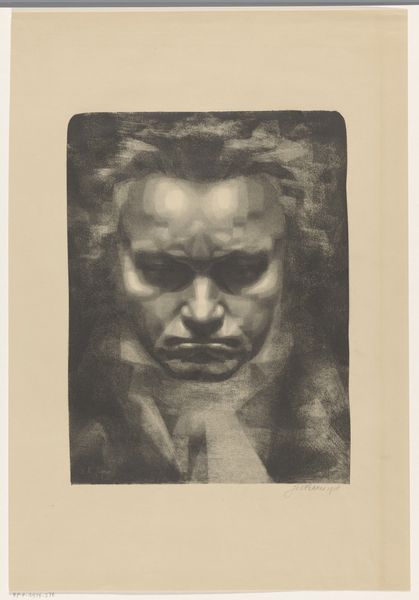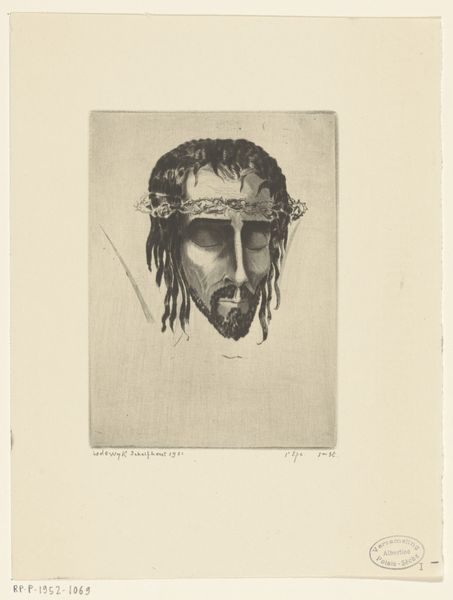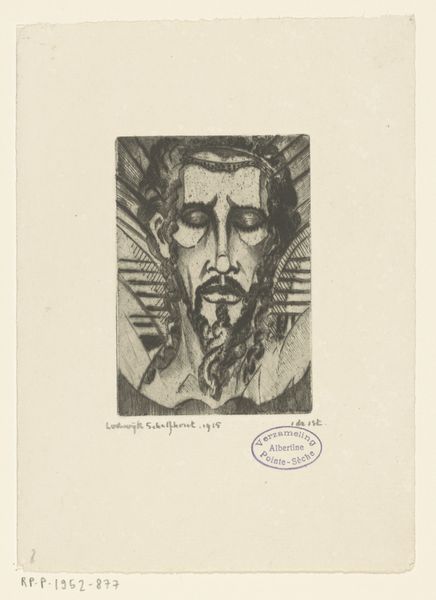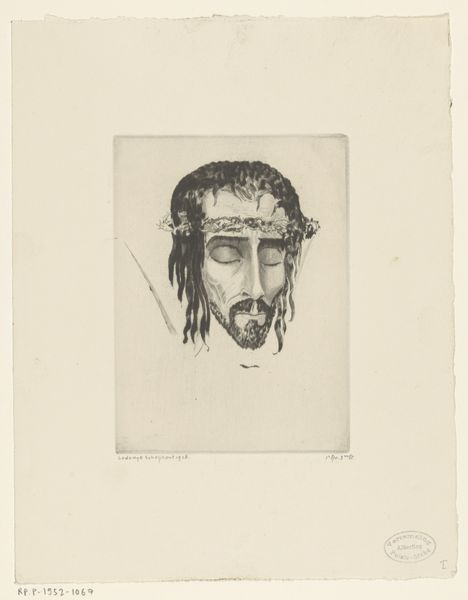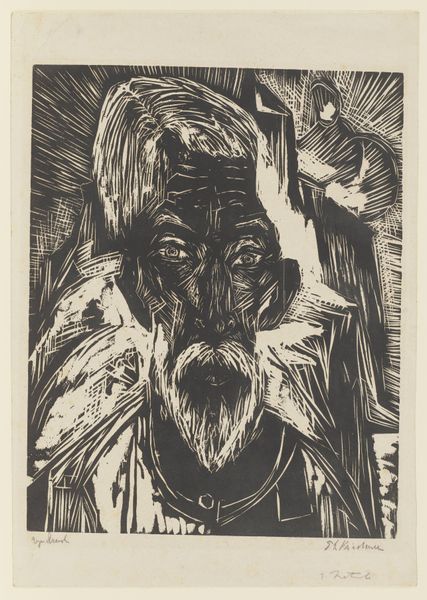
graphic-art, print
#
graphic-art
# print
#
caricature
#
expressionism
#
symbolism
#
portrait drawing
#
monochrome
Dimensions: height 602 mm, width 470 mm
Copyright: Rijks Museum: Open Domain
Curator: Here we have Lodewijk Schelfhout's 1913 print, "Head of Christ," currently residing here at the Rijksmuseum. The piece is rendered in monochrome, showing Christ wearing a crown of thorns with what looks to be a church in the background. What's your immediate take? Editor: Visually arresting and unsettling. The distorted, almost mask-like features of Christ evoke a strong sense of alienation and suffering. The heavy shading and sharp lines seem to amplify an inner torment. Curator: Precisely. Consider the Expressionist and Symbolist techniques here. The severe simplification of form, along with the monochromatic palette, channels a very specific emotional register. The print medium allows for sharp contrast. The lines define the face in almost geometric planes, dissecting it and thus perhaps communicating interior anguish. Editor: It's hard not to read this within the context of early 20th-century anxieties. The looming presence of the church in the background, coupled with this very raw portrayal of Christ, feels like a critique of religious institutions and their failure to address the suffering of the individual. There’s an almost confrontational tone in its refusal to romanticize religious iconography. Curator: That’s interesting because I had considered whether the church offered refuge, though the way the thorns visually penetrate both figure and background complicate that reading considerably. I had leaned toward regarding those visual planes as explorations into volume, pure geometric forms in dialogue across the surface, the Expressionist impulse pared to its bones through printmaking. Editor: And, thinking about the artist, Schelfhout was working in a time of great upheaval in Europe. Perhaps this image is as much about broader societal suffering and loss of faith as it is about any singular, religious figure’s. What resonates most is the sheer rawness of feeling; how it speaks to pain and disillusionment. Curator: I concede to your point. We often see an aesthetic idealization in depictions of Christ; this particular work violently rejects that tradition through form itself. It strips away any sense of transcendence to reveal a very human vulnerability, a very raw visual truth about the weight of pain. Editor: And, through that, it perhaps opens up spaces for solidarity, empathy, and a recognition of our shared humanity, even in moments of profound anguish. It reframes faith as something forged in the crucible of lived experience. Curator: A truly impactful and unsettling work. I will think about that context as I observe those planes of light and dark and shadow. Editor: Thank you for sharing. It really gave me something to think about in terms of representation and historical context.
Comments
No comments
Be the first to comment and join the conversation on the ultimate creative platform.
